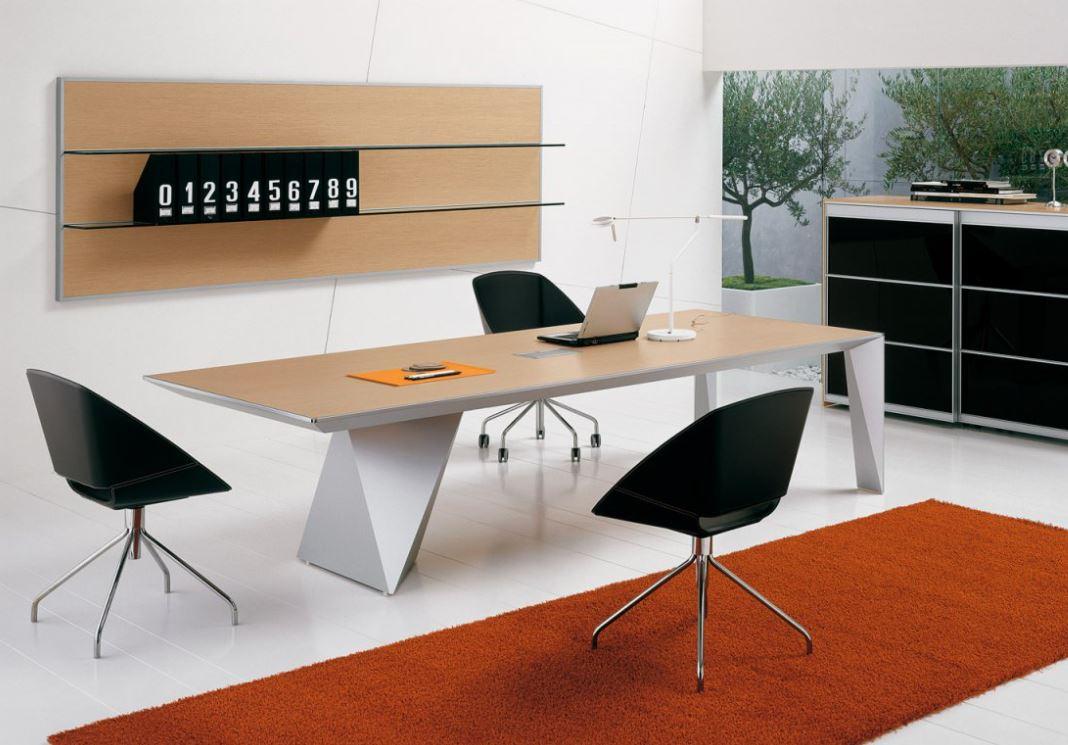Elevating Workspaces with Modern Office Table Design

An effective workspace isn’t just about technology or team dynamics; it’s about the environment itself. The office table design plays a central role in shaping that experience. With long hours spent behind a desk, the furniture we use significantly influences productivity, health, and even creativity. A thoughtfully designed office table contributes to an organized, comfortable, and inspiring atmosphere that can help individuals and teams perform at their best. Gone are the days when office tables were rigid, uniform, and purely functional. Today’s designs are diverse, flexible, and tailored to meet a range of needs, from ergonomic considerations to style and spatial dynamics.
Businesses across the globe are increasingly investing in office tables that reflect their brand identity and foster collaboration. Whether it’s a minimalist table in a startup or a luxurious executive desk in a corporate firm, office table design has evolved into a symbol of modern work culture. With the rise of hybrid work models, flexibility is crucial. Tables must support not only computers and paperwork but also virtual meeting setups, cable management systems, and modular components that adapt to changing workflows.
Key Features of a Functional Office Table
When choosing or designing the perfect office table, several elements should be taken into account. The ideal office table balances functionality, aesthetics, and comfort. First, size matters — a table that’s too small can feel restrictive, while one that’s too large may dominate the room unnecessarily. Consider the number of monitors, documents, or accessories that will be used regularly. Next is the height and ergonomics. Adjustable height desks are gaining popularity due to their ability to cater to various body types and encourage movement throughout the day.
Storage is another critical factor. Drawers, under-desk cabinets, or integrated shelves can reduce clutter and increase efficiency. Cable management systems ensure a tidy appearance and reduce hazards, especially in tech-heavy environments. Material and finish also contribute significantly. Wood offers a classic, warm feel, while metal and glass provide a sleek, modern aesthetic. The chosen material should complement the broader interior theme while being durable and easy to maintain.
Office Table Designs for Different Work Styles
Office table design isn’t one-size-fits-all. Different professionals have different requirements. For instance, a creative professional might need a wide surface with space for sketchbooks, laptops, and mood boards, while a corporate executive might prefer a stately desk with multiple compartments, file drawers, and possibly even a locking mechanism for security.
Collaborative tables are designed to facilitate communication and brainstorming. These tables are often large, round, or modular, encouraging group discussions and teamwork. On the other hand, private workstations may use corner or L-shaped desks to provide more surface area and a sense of personal space. Shared office tables or benching systems are common in co-working spaces, where multiple users can work simultaneously at a long, continuous desk. This promotes a communal work culture while maximizing space.
Importance of Ergonomics in Office Table Design
Ergonomics is not just a buzzword; it’s a fundamental aspect of healthy office design. Poorly designed office tables can lead to back pain, wrist strain, and long-term posture issues. An ergonomic office table takes into account the natural alignment of the human body.
Adjustable-height tables allow users to switch between sitting and standing, reducing fatigue and encouraging circulation. A proper desk height, ideally between 28 to 30 inches from the floor, ensures that elbows are at a 90-degree angle while typing. Pairing the right office table with an ergonomic chair enhances the overall comfort and efficiency of the workspace.
Incorporating keyboard trays, monitor stands, or footrests also contributes to a healthier work posture. These ergonomic features are increasingly being included in office table making it easier for businesses to create comfortable work environments without sacrificing style.
Blending Style and Professionalism in Office Table Choices
While function and comfort are crucial, aesthetics should not be overlooked. A beautifully designed office table can enhance the visual appeal of any workspace, contribute to a positive first impression, and reflect the company’s ethos. For example, a clean, Scandinavian-style table with light wood and white accents might suggest a creative, open-minded company.
Conversely, a dark wood executive desk with polished brass handles signals authority and sophistication. The finish, color scheme, and structure should align with the room’s lighting, flooring, and other furniture. Glass-top tables are trendy in modern offices due to their minimal look, while solid wood desks continue to be favored in traditional office setups.
Additionally, office tables with built-in LED lighting, wireless charging stations, or hidden compartments are becoming increasingly popular. These stylish innovations add convenience and contribute to a sleek, high-tech office environment.
Sustainable Office Table Design and Eco-Friendly Materials
Sustainability is shaping the future of office table design. More companies are seeking eco-conscious furniture that minimizes environmental impact. Tables made from reclaimed wood, bamboo, or recycled metal are excellent choices for green offices.
Eco-friendly office tables not only benefit the planet but also enhance the brand image among environmentally conscious clients and employees. Certifications such as FSC (Forest Stewardship Council) and GREENGUARD help identify sustainable products. Investing in durable, long-lasting materials also reduces the need for frequent replacements, saving money and resources in the long run.
Some designs go a step further by incorporating modular components that can be reused or repurposed. This adaptability ensures that even as teams grow or office layouts change, the tables remain functional and relevant.
Conclusion: Making the Right Investment in Office Tables
Choosing the right office table design is an investment in employee well-being, organizational efficiency, and visual branding. Whether you’re furnishing a home office or revamping a corporate space, the right table sets the foundation for productive work. As trends shift toward flexible, ergonomic, and sustainable solutions, staying updated with modern designs becomes essential.
It’s not just about a piece of furniture — it’s about crafting a workspace that supports your goals. For businesses and individuals seeking a blend of style, utility, and innovation, Modern office table designs offers a curated selection of office tables that elevate any professional setting.






